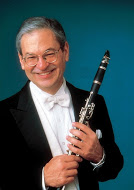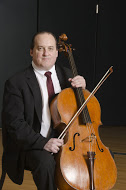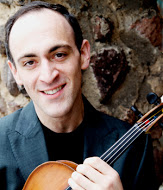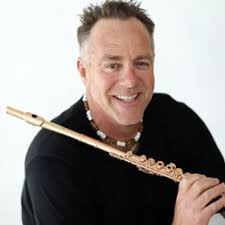Fine Chamber Concert Defeated by the Elements

David Shifrin [photo courtesy of Mainly Mozart]
Mendelssohn’s desperately tragic String Quartet No. 6 in F minor, Op. 80, opened the concert. The composer’s final major work before his untimely death at the age of 38, this quartet followed quickly on the heels of his cherished sister’s own death six months earlier. This incredibly and intensely emotional quartet featured Jun Iwasaki, first violin; Jeff Thayer, second violin; Mark Holloway, viola, and Ronald Thomas, cello. They expended every conceivable effort to perform the piece as well as humanly possible, but ultimately their efforts fell short on account of the horrid acoustics.
Iwasaki as first violinist did his best to delineate rhythms and the melodic contours of the piece, but the ensuing musical mush made for insurmountable ensemble problems. Iwasaki’s ringing and incisive violin sound should have easily soared above the sensitive playing of his colleagues, but it was not to be.
The furor of the opening Allegro vivace assai should have overwhelmed the listeners with its intensity, but the morass of sound did not produce the requisite intensity. Thomas, however, in conjunction with violist Mark Holloway, did attempt to use his husky cello sound to delineate the inherently crystalline quality of Mendelssohn’s compositional technique. Formal sections were demarcated effectively by the violist and cellist, even though the individual quartet lines slouched into a wash.
The intrepid musicians seemed to relax into their unenviable acoustic fate for the second movement, a scherzo-like Allegro assai. Trying out some gallows humor that was not quite funny, the music spewed out as if four men were trying to simultaneously argue their points with rocks in their mouths. The players’ effort to articulate was there, but they was totally overwhelmed by the distracting reverb of St. Paul’s.
The third movement Adagio proved the most successful movement. The sleek string playing of all four of the highly accomplished gentlemen could finally blossom, and each string part was discernible, due to the lack of contrapuntal activity. The rich, resonant sound of Iwasaki’s violin was freed to float above the group, which made a remarkably clear musical statement.

Ronald Thomas [photo courtesy of Mainly Mozart]
For me, the violist was the real star of the quartet. It is hard to say how Holloway did it, but he capably infused each of his lower mid-range viola lines with a high degree of interest.

Violist Mark Holloway [photo courtesy of Mainly Mozart]
Shifrin was featured in Mozart’s Clarinet Quintet in A Major, K. 581, along with the able bodied string quartet . Shifrin was also incapable of overcoming the tsunami of acoustical backwash, although part of the problem was his own doing. He produces a delicious, dark and yet luminous sound that is unique, and his intonation and phrasing are as close to perfect as is possible on the clarinet. Yet his choice of an instrument made from Cocobolo wood was not ideal for this venue. Using a brighter, standard-issue Buffet clarinet of grenadilla wood would have given him a better chance of defeating the room’s inherent mushiness.
The violinists exchanged positions for the Mozart with Thayer playing first and Iwasaki moving to second. Both are marvelous musicians, but it was quite clear from the beginning of the Mozart that Thayer is a more effective second than Iwasaki. The string ensemble was noticeably more ragged, and although the masterful bowing of all of the players would have made for an ethereal experience under different circumstances, moments of truly playing together were rare.
In the opening Allegro of the Mozart, for instance, the players commenced with an up-bow that created a quasi-mystical sense of an imaginary door opening unto a “music room of the mind” where the ensemble had already been playing. It was not as if the music began: instead, there was a sense that it had always been playing and that we were being privileged to listen in. It was a marvel of sensitivity and profound artistic insight.
As soon as Shifrin entered, though, the string attacks became increasingly jagged. The poor ensemble was further exacerbated by an apparently willful lack of sensitivity to the slight, rhythmic nuances that the clarinetist required to complete his phrases as he wished. Unless the quartet, with or without Shifrin, was playing metronomically, Thayer in particular destroyed any sense of nuance by just barreling ahead with where he thought the beat should be.
The rhythmic contradictions between Shifrin and Thayer persisted through the entire work but were particularly evident in the incredibly beautiful Larghetto movement. This constant rhythmic disagreement coupled with the clarinet’s warm, round timbre gave me the sensation of looking at the Hope Diamond through a piece of gauze. The rhythmic and tonal fogginess managed to occlude the artistry of one of classical music’s greatest living musicians playing one of the classical repertoire’s greatest masterpieces.
The two musicians who remained absolutely locked into Shifrin’s sound world as well as the other string players were violist Holloway and cellist Thomas: they really saved the night. Both of their robust, full sonorities, nearly perfect intonation, and faultless ensemble work held the performance together. When Shifrin soared during the Mozart, it was when he was allowed to stand on the big and unflinching shoulders of the lower strings.

Yochanan Sebastian Winston, Ph.D. has performed throughout the United States, Europe and Latin America. His repertoire spans classical, jazz, klezmer, new age, contemporary, rock & roll and pop and is very active as a composer. Dr. Winston holds a Ph.D. from the UCSD, a Diplôme from the Conservatoire National de Region de Boulogne-Billancourt (France), and a Master’s and Bachelor’s of Music from the Manhattan School of Music in New York City.
